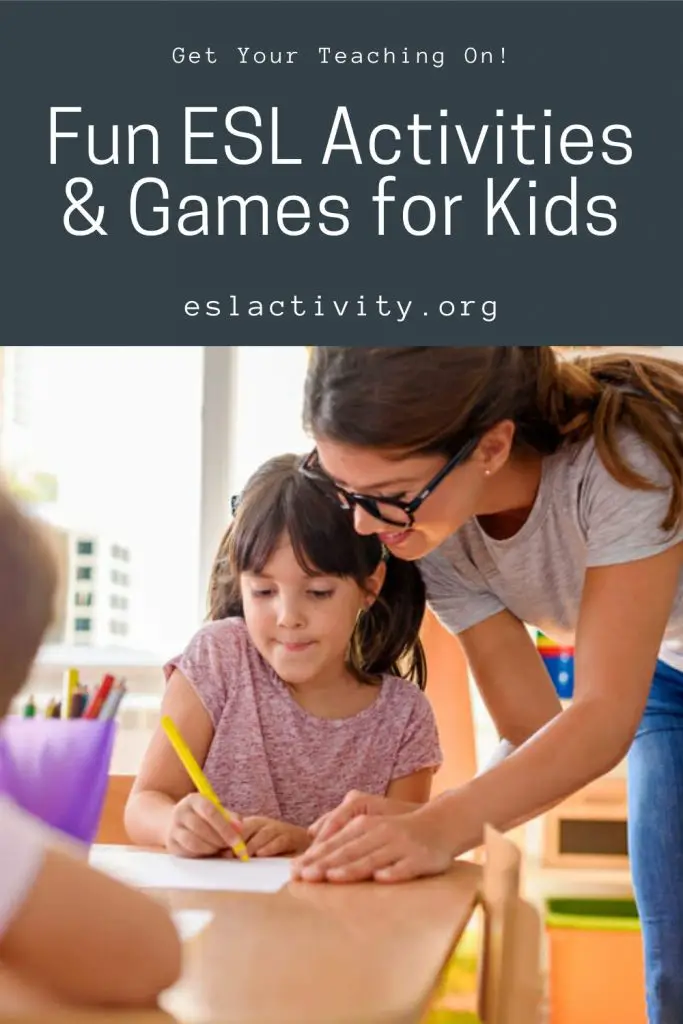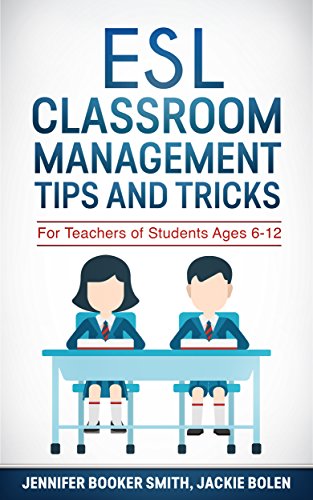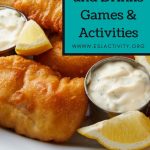If you’re looking for some fun ESL activities and games for kids, then you’re certainly in the right place. Keep on reading for everything you need to know ESL lessons for kids!

ESL activities for kids
Let’s get into the best ESL kids’ games and activities to try out in your lessons. Have some more fun in class!
ESL Activities for Kids
If you teach English to children, try out these ESL activities for kids that are guaranteed to make your classes awesome and your lesson planning as painless as possible. Seriously. You’re not going to regret using some of these prime ESL activities for kids.
The key to happy, engaged students is a wide variety of interesting games and activities. Nobody likes doing the same old thing class after class, right? It’s easier than ever to design fun lesson plans for kids with some of these good activities you can try out today.
Without further ado, let’s get to the ideas for an ESL activity for kids to spice up your classroom.
#1: Password Vocabulary Game
This is a fun game that helps students practice the important skills of using alternative words to describe something they don’t know the exact vocabulary word for. It’s something we need to do all the time when speaking a language that’s not our own and we often find ourselves doing it in our first language as well.
It’s also ideal to help students remember new words and it’s actually one of my favourite guessing game ideas. After all, learning vocabulary is all about repetition and we can help our students do that in our classes.
More details here: Password.
#2: Role Plays for ESL/EFL Students
This is one of the best things you can do with low-level students because it gives them confidence that they’re able to handle different kinds of real-life situations. You can adjust the size and number of the blanks in the conversation depending on the level of your students.
It’s a great way to help students learn correct sentence structure.
Learn how to set them up here: ESL Role-Plays.
- Amazon Kindle Edition
- Smith, Jennifer Booker (Author)
- English (Publication Language)
- 72 Pages - 12/24/2015 (Publication Date)
#3: Running Dictation: A 4-Skills ESL Activity
If you want to get some energy into your classes, try out this ESL activity for kids. However, it’s not great for young children, so 10+ only.
It’s really, really fun and also practices all 4 skills at the same time which actually makes it the holy-grail of ESL activities! Plus, it gets students up and out of their seats as they race around the class to get all the clues.
You can use it to work on review for grammar and vocabulary from previous units. Or, use it to introduce some new concepts at the beginning of a chapter. The basic requirement is that students can read, write and handle spelling at a basic level.
You can find out more here:
#4: Taboo English Vocabulary Game
This is a fun game for those party days at your school where you actually want to slip a bit of English learning in there in a kind of sneaky way. It makes an excellent way to review vocabulary with your children.
Learn how to play this fun ESL Speaking game for children here: Taboo.
#5: Rock-Scissor-Paper ESL Activity
What kid doesn’t love rocks-scissors-paper? You can adapt it and turn it into a fun ESL activity for kids that will have your students coming back for more!
One of the best things about this one is that it works best for larger classes. So, if you’ve got some serious numbers in your class, consider using this game.
Find out more here about one of the best ESL activities for kids: Rocks-Scissor-Paper.
#6: Board Games for ESL Students
Board games are another one of my favourite activities for kids. You can learn more about how I use them in my classes in this short video below. Help students learn English by having some fun at the same time!
#7: 3 Things ESL Writing Activity
If you want to have some fun with English writing, then consider this 3 things activity. It’s simple, requires nothing in the way of preparation and makes a nice filler. Learn more about it right here:
#8: Holiday Activities and Games
Kids love to talk about popular holidays in English! And there are a ton of games and activities you can do for each of them. Have some fun with popular North American holidays with your students today. Here are some of our top picks:
Christmas Games and Activities
- Amazon Kindle Edition
- Bolen, Jackie (Author)
- English (Publication Language)
- 75 Pages - 07/12/2015 (Publication Date)
#9: Activities for Telling Time
Learning how to tell time is a classic unit in almost all ESL textbooks for kids. The thing I like best about it is that there so so many fun activities you can do with it. Here are some of the best ideas:
#10: Activities and Games for Body Parts
Parts of the body is another one of those units or topics that you can find it almost any ESL textbook for children. There are so many fun games you can do with it that it’s a unit I enjoy teaching. Here are some of the best ideas:
#11: ESL Whiteboard Games
I’m not sure why, but almost all students love to write on the whiteboard. Maybe it’s the novelty factor of it? Whatever the case, there are lots of fun, engaging relay type activities that you might want to try out with your ESL classes for kids. Here are some of the best recommendations:
- Amazon Kindle Edition
- Bolen, Jackie (Author)
- English (Publication Language)
- 50 Pages - 01/21/2016 (Publication Date)
#12: A to Z Game
This is a quick warmer or time-filler activity that can be used with just about any topic but it works particularly well with animals or jobs. The way it works is that in pairs, students write the alphabet on a piece of paper. Then, they try to think of one word for each letter related to a certain topic. They don’t have to do it in order and the winner is the team with the most words at the end of the allotted time.
Find out all the details here: A-Z Alphabet Game.
#13: Songs and Chants for Kids
One of the best things for teaching English to kids is to bring some songs and chants into your classroom. Except if you’re not good at singing like me, it can be a bit intimidating. Not to worry though! YouTube is your best friend here.
#14: ESL Number Activities
Kids often have a very basic understanding of numbers in English so reviewing and improving skills related to this can often be a great use of class time. There are lots of options for activities and games to help make learning numbers in English more memorable. Here are a few of our favourites:
ESL Number Activities and Games.
#15: Family and Family Tree Activities
Family is a classic topic for kids to study in English class! You may even consider getting them to make a family tree for a homework assignment, or consider doing it in class. Here are some of the best recommendations:
ESL Family and Family Tree Activities.
#16: Postcard ESL Writing Activity
Who doesn’t like getting or writing a postcard, right? If you have some old, blank postcards or can your hands on some cheap ones, then you’ll want to consider this simple ESL writing activity. It’s ideal for kids from beginners or advanced.
Do you want to try it out? Learn more here: Postcards Writing Activity.

ESL Kids Games and Activities
#17: ESL Reading Activities
If in doubt, working on English reading skills for kids is never a bad thing! That’s because reading is often the foundation upon which the other skills are based. If you can’t read well, how can you learn vocabulary? It’s difficult! Here are some of the top picks for activities that focus on this important skill:
ESL Reading Comprehension Activities.
#18: Giving an Opinion ESL Games and Activities
Everyone likes giving their opinion, right? It’s a common topic in many ESL textbooks and is often related to clothes, food or travel. If you want to see some of the best ideas for teaching this unit to children, then you’ll want to check out the following resource:
Expressing Opinions ESL Activities.
#19: Halloween ESL Activities and Games
What kid doesn’t love celebrating Halloween? It’s just a time of pure fun and excitement! If you want to celebrate this popular holiday with your students, then you’ll need to check out these ideas here:
#20: Word Challenge Spelling Game
Spelling is an important but often neglected writing and vocabulary skill. That’s why I like to devote a bit of time to it in my classes.
One of the best ways to do this is to play this word challenge game. Students have to race to write the correctly spelled word on the whiteboard. Of course, you can tailor it to whatever vocabulary you’ve been teaching lately.
Want to find out all the details? You can see it here:
#21: Typhoon
Try out this fun game for all ages! It’s ideal for reviewing just about anything.
#22: Flashcard Game
Need some more ideas for using flashcards in the classroom? Check this out: ESL Flash Card Games.
#23: Me Too!
This is a simple but fun ESL speaking and listening activity that requires absolutely nothing in the way of preparation or materials. What English teacher doesn’t like to have a few of these in their back pocket, right?
The way it works is that a student says a fact about themselves to find out who also has this fact in common. Want to find out how to play? You can see all the details right here:
#24: Vocabulary Quiz for Kids (Name 5 Things)
#25: Man/Woman on the Street Interview Activity
If you want to elicit some opinions from your students for just about anything, try out this man or woman on the street interview activity. It’s perfect for working on question forms and is heavy on the listening and speaking. It’s a fun way to get some interaction going on in a TEFL classroom! Learn more about it in this article:
ESL Interview Activity: Man/Woman on the Street.
#26: Freeze Writing Activity
Group writing activities are few and far between! However, this is a fun, engaging and interactive one that you might consider trying out in your children’s TEFL classes. Take a look at this activity here:
Freeze Group Writing Activity.
#27: Puzzle Finder ESL Activity for Kids
Kids love puzzles and this ESL activity makes great use of them. It’s an excellent icebreaker activity that will challenge your students and also get them talking and mingling with all their classmates.
The best part? Students NEED to talk to each other to complete the activity. Love it? I know that I sure do.
More details about the Puzzle Finder Activity.
#28: Apples to Apples Speaking Game for Kids
Apples to Apples is a really fun way to help your students remember some vocabulary, plus have a ton of fun in the process. This ESL Speaking activity is perfect for a “game-day” when you want to actually do something educational, but awesome!
More details about Apples to Apples for ESL students. It’s one of the best ESL speaking activities for kids so try it out today.
#29: I’m an Alien ESL Speaking Activity for Children
What kid isn’t interested in aliens? This ESL Speaking activity is a fun warm-up where you create a mission and the students have to help you complete it. Try it out and you’ll have the kids begging to do it again in another class! Its an excellent way to generate interest in a topic and activate prior knowledge, but in a way that is fun, engaging and awesome.
More details about I’m an Alien.
#30: Information Gap Activities
I LOVE to use information gap games and activities in my class. Basically, they force students to talk to each other to find out the information that they don’t have. Try out this style of speaking activity for children with some of these fun ideas:
ESL Information Gap Activities and Games.
#31: Yes or No Question Activities
Yes and no questions and answers are one of the first grammar concepts that English learners learn. It’s simple and easy to understand and there are plenty of ESL speaking games for children to go along with it. To see some of the top picks, be sure to take a look right here:
#32: Find Someone Who Bingo
Try out this fun speaking activity for children if you want to help them get to know others at the beginning of the semester. Basically, students have to talk to each other to find out information about their classmates in order to fill in their Bingo board. It’s for this reason that this activity works better for slightly older and more advanced students.
Want to give it a try? You can see check it out here:
- Amazon Kindle Edition
- Smith, Jennifer Booker (Author)
- English (Publication Language)
- 134 Pages - 03/31/2016 (Publication Date)
#33: Ball Toss Fun Speaking Game for Young Learners
If you want to have a little fun and get your kids speaking English as well, then try out Ball Toss. It’s ideal because it lends itself to almost any vocabulary set or grammar topic.
It’s time to create a bit of excitement in your classes for children! Find out more here:
#34: ESL Clothing Quiz
Try out this fun, interactive online game with your students:
#35: Hot Potato
You probably played hot potato when you were a kid, but it also makes an excellent ESL speaking activity. The way it works is that when the timer stops, the student holding the “potato” is shown a flashcard and has to say the word (beginners) or answer a question about it (intermediate/advanced).
You can adapt this to almost any level, even the total beginner who knows only a few words of English. It’s really that easy!
More information about how to play Hot Potato.
#36: Dictogloss Speaking Activity ESL
A challenging listening and speaking activity for kids is Dictogloss. The way it works is that you have to find a reading passage, but then read it out at a faster than normal pace. Students have to take some notes and then work together to recreate what they heard through speaking.
Sounds like something you want to try? Find out all the details here: ESL Dictogloss Activity.
#37: Mystery Box Game for Young Learners
A fun oral activity for kids who are learning English is Mystery Box. The way it works is that you fill a box or bag with secret objects. Then, students have to reach their hand in and depending on the level, either describe what they feel (smooth, rough, hard, rectangular) or simply say the vocabulary word and take the item out.
Find out more information about this fun speaking game that kids love here: ESL Mystery Box Game.
#38: 20 Questions
#39: Idiom Activity
Idioms are a common part of the English language so you may want to try out this memorable activity to help your students remember them forever!
Students choose (or you can give them) a common English idiom. Then, they have to draw it literally, do some research about the meaning in English and then use it in a sentence.
Finally, the speaking part comes in where they have to present their findings to the class. Sounds like a fun multi-skill ESL activity? It is! Learn more here: ESL Idiom Activity.
#40: Brainstorming Activities
I love to use some brainstorming activities and games in my ESL classes for kids. They are perfect for getting some creative juices flowing and they make a nice warmer or review activity too.
Sounds like a good idea to you? Here are some of the top recommendations: Brainstorming Activities and Games.
#41: Don’t Forget about ESL Warmers
#42: Daily Schedules ESL Speaking Activities
If you’re looking for a great topic, then consider daily schedules or routines. It’s simple, easy to teach and most students find it quite interesting, from kids to teens to adults.
Want to find out the best ideas for this lesson? Have a look here: Daily Schedule ESL Activities.
#43: Ideas for Teaching Young Learners
#44: Directions ESL Games and Activities
Giving and getting directions is a fun unit for kids! There are just so many games and activities to do with it, including things like information gap activities and bumbling blindfolds that can create a bit of excitement in the classroom.
Find out the top choices here: ESL Directions Activities.
#45: ESL Food and Drink Games and Activities
#46: Feeling and Emotions Activities for Children
It’s never wasted time to teach kids how to express their feelings and emotions in English. There are lots of ways to do that! Check out some of my top recommendations:
Feelings Emotions Activities and Games.
#47: Last Day of Class Ideas
There are a ton of fun things you can do with kindy kids on the last day of class. Have a look here for some fun ideas:
Things to do on the last day of school.
#48: Easy Debate Topics
I love to get my students talking about interesting things in my class! Having a simple debate is a fun way to do this. Here are some of my favourite topics:
#49: First Day of Class Activities for Kids
#50: There Is/There Are Games
One of the first concepts that English learners learn is there is/there are. It’s a key grammatical concept that any English student has to master. Here are some of my top ideas for teaching it:
#51: Science Games
If you are teaching a lesson on scientific concepts, try incorporating one of our science games and activities to add some fun.
Like these ESL Activities for Kids?
- Amazon Kindle Edition
- Smith, Jennifer Booker (Author)
- English (Publication Language)
- 134 Pages - 03/31/2016 (Publication Date)
Do you like these ESL games and activities for kids? Then you’re going to love this book: 101 ESL Activities for Kids 7+. It’s lesson planning made easy, guaranteed.
There are dozens of fun, engaging activities for speaking, listening, reading, writing, grammar and vocabulary, as well as warm-ups and icebreakers. It’s the book that belongs on every ESL teacher’s bookshelf for easy and simple lesson planning.
You can find an activity to supplement just about any topic or grammar point. The book is well-organized into sections so you’ll able to find what you’re looking for quickly and easily.
The book is available on Amazon in both print and digital formats. If you download the Kindle reading app, you can read the book on any device including your computer or smartphone. It’s easier than ever to plan lessons on the go.
You can check out 101 ESL Activities for Kids over on Amazon
ESL Games for Kids FAQs
There are a number of common questions that people have about ESL games and activities for teaching kids, as well as teaching ESL to children in general. Here are the answers to some of the most popular ones.
How can I teach English to ESL kids?
Teaching English to ESL kids is easy with these tips:
- Use hands-on activities that get kids moving around the classroom.
- Avoid teacher-talking-time as much as possible.
- Use lots of interactive ESL games and activities.
- Review lots! Every single class if possible.
- Offer gentle feedback and error correction.
- Make sure to set the context for when students can use the language you’re teaching them.
- Consider using things like songs, chants, and videos.
- Encourage English reading outside the classroom.
What is required to teach ESL to children?
Qualifications in terms of what is required to teach ESL to children vary from country to country and job to job. However, some basic requirements for most places are a bachelor’s degree and a criminal record check. Beyond that, a TEFL or TESOL certificate will certainly be useful and in some cases, required.
How can I teach new words to young learners?
How can I start teaching English to beginners?
Teaching English to beginners can be challenging. But, here are a few tips for doing it well.
- Keep it simple.
- Use lots of review.
- Mix up partners and groups often.
- Try to reduce teacher talking time as much as possible.
- Use a variety of interactive and engaging ESL games and activities.
- Never forget to set the context for new grammar and vocabulary.
What is the best English teaching method?
English teaching methods have changed considerably over the years. The direct method and the grammar-translation method have fallen out of favour and these days, most people are proponents of task-based learning or communicative language teaching.
How can I teach ESL speaking to kids?
ESL Lesson Plans for Kids
If you teach ESL to kids and want to see some ESL lesson plans for children, then have a look at some of our favourite resources:
British Council Teaching English
What are some Tips for Teaching ESL to Kids?
Teaching English as a Second Language (ESL) to kids requires a thoughtful and engaging approach. Here are some tips to help you effectively teach ESL to young learners:
Use Visuals
Utilize visuals, such as flashcards, pictures, and real objects, to introduce and reinforce vocabulary. Visual aids help children associate words with images, making it easier for them to understand and remember new vocabulary.
Keep it Interactive
Incorporate interactive activities that engage students actively. Encourage speaking and listening by using games, role-plays, songs, and chants. Hands-on activities and group work foster language practice and create a fun and dynamic learning environment.
Simplify Language
Adapt your language to the learners’ proficiency level. Use simple sentence structures, clear pronunciation, and age-appropriate vocabulary. Break down complex concepts into smaller, more manageable parts to aid comprehension.
Provide Repetition
Young learners benefit from repetition to reinforce language skills. Repeat key vocabulary, sentence patterns, and grammar structures throughout the lessons. Incorporate regular review activities to consolidate their learning.
Incorporate Multisensory Techniques
Engage different senses by incorporating activities that involve movement, touch, and visuals. Use gestures, body language, and physical props to enhance comprehension and make learning memorable.
Make it Contextual
Teach English within meaningful contexts that relate to children’s lives and interests. Use topics and themes that are relevant and familiar to them, such as family, animals, food, or daily routines. This helps children connect new language concepts with their existing knowledge.
Foster a Positive Learning Environment
Create a supportive and encouraging classroom atmosphere. Praise and acknowledge students’ efforts and progress, which boosts their confidence and motivation to learn. Provide a safe space for students to take risks and make mistakes without fear of judgment.
Use Authentic Materials
Introduce authentic materials like children’s books, songs, and videos that are appropriate for their age and language level. Authentic materials expose students to real-life language use and cultural aspects of the English language.
Develop Listening Skills
Incorporate activities to enhance listening comprehension skills. Use audio resources, such as stories, songs, and dialogues, and provide opportunities for students to listen for specific information or follow instructions.
Encourage Language Output
Promote speaking and writing activities that allow children to practice using the language. Offer opportunities for students to communicate and express themselves through pair work, group discussions, presentations, and written tasks.
Establish Routines
Create consistent routines and structures in your ESL lessons. This helps children feel secure and understand what is expected of them during different parts of the class.
Involve Parents
Communicate regularly with parents and involve them in their child’s language learning journey. Share resources, provide suggestions for at-home practice, and seek feedback to establish a strong home-school connection.
ESL Activities for Kids: Join the Conversation
What’s your favorite ESL activity or fun English game for kids? Did you try one of the games or activities from this list? Leave a comment below and let us know your English teaching secrets! We’d love to hear from you.
Also be sure to give this article a share on Facebook, Pinterest, or Twitter. It’ll help other busy teachers, like yourself find this useful teaching resource.
Last update on 2022-07-17 / Affiliate links / Images from Amazon Product Advertising API










